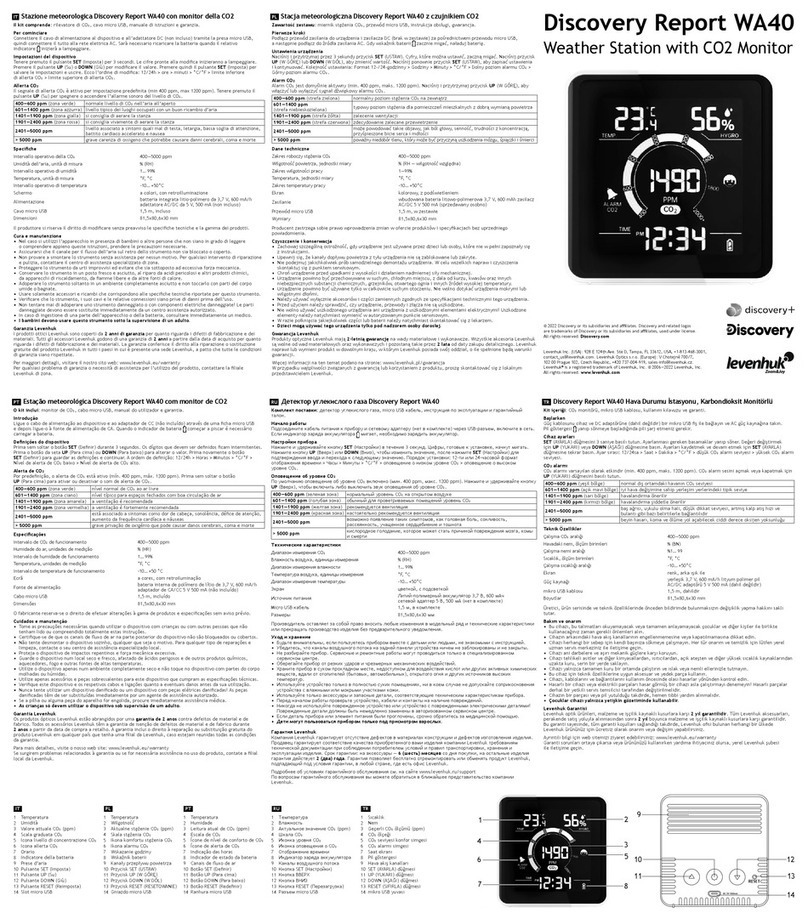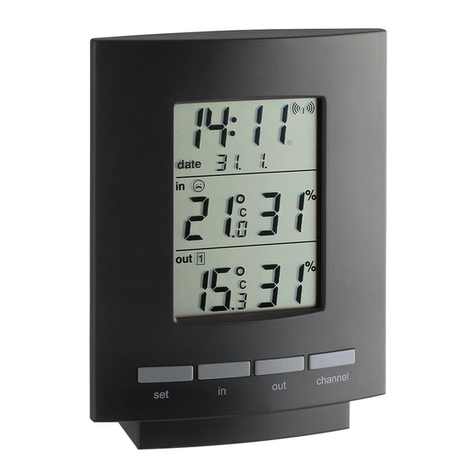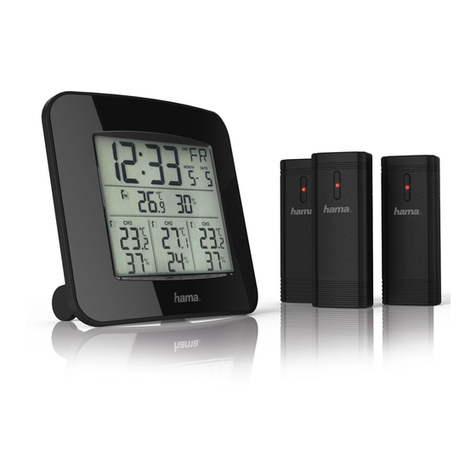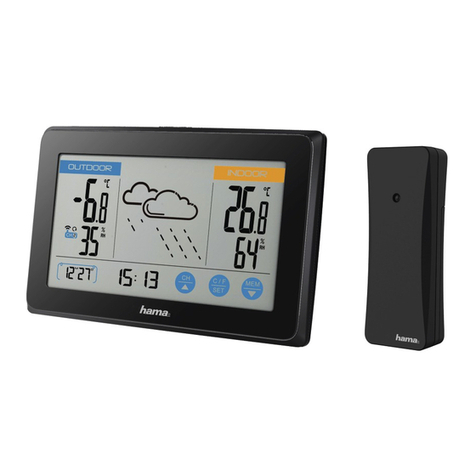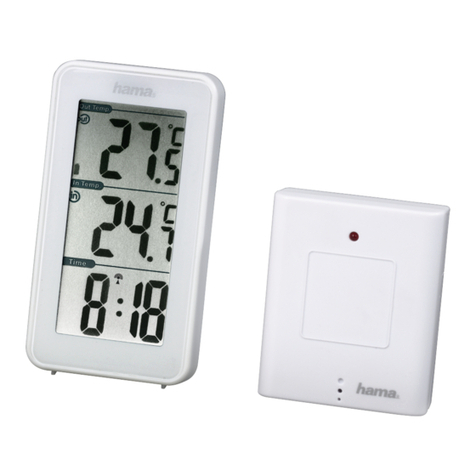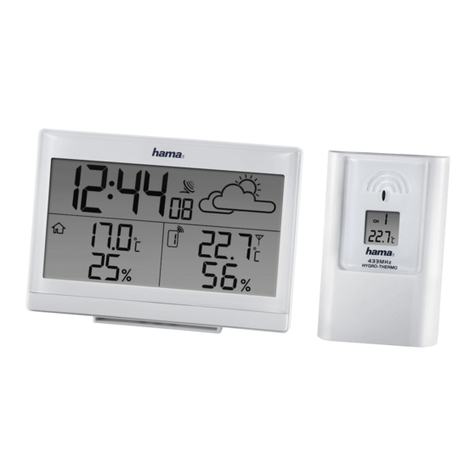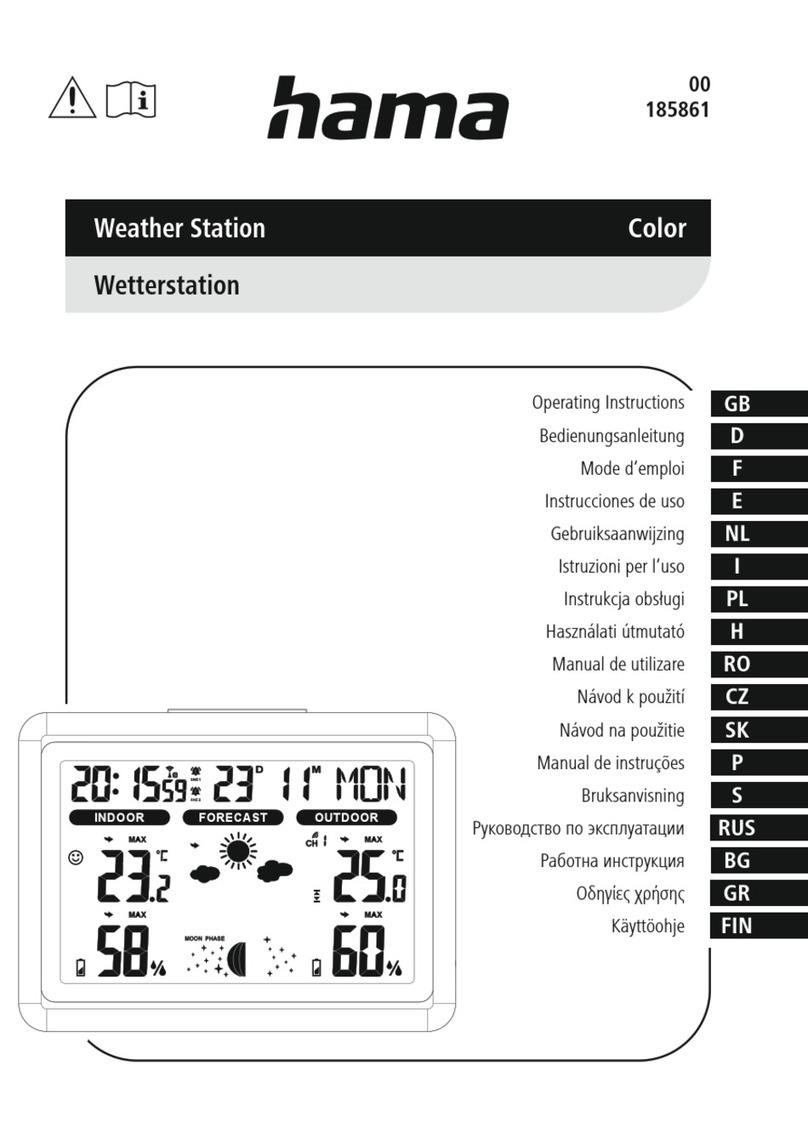
6
5.1. Base station
•Use the base to position the base station on alevel surface. (C)
5.2. Measuring station
•Youcan fasten the measuring station horizontally or vertically to an outer wall using a
mounting plate (26).
•If you want to mount the measuring station horizontally,use rawl plugs, screws, etc. to
fasten the mounting plate (26) using the central cut-out (28) to the wall intended for
installation.
•If you want to mount the measuring station vertically,use rawl plugs, screws, etc. in the
wall intended for installation and hang the mounting plate (26) using cut-out (27).
•Gently push the measuring station until you hear alatching sound (“click”) as it engages
with the clips (29).
6. Operation
Note –Input
Hold down the -button (18) or the -button (19) to select the values faster.
6.1. Connection to the measuring station
•After you insert the batteries, the base station automatically searches for aconnection to
the measuring station and performs initial setup.
Note
•Initial setup takes approx. 3minutes.
•During connection, the wireless symbol on the measuring station will ash (3).
•Do not press any buttons during setup. Otherwise, values may not be transmitted
correctly and thereisarisk of value errors and inaccuracies.
•The setup process is completed when the indoor (18, 14) and outdoor (6, 16)
measurement data is displayed.
•If the base station still does not receive asignal from the measuring station, press and hold
the -button (19) for approx. 3seconds to start the manual search for the signal.

